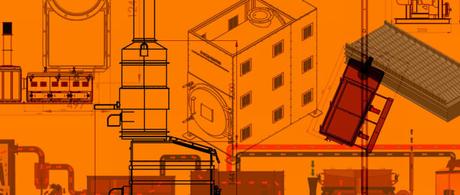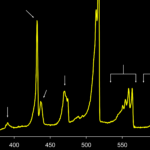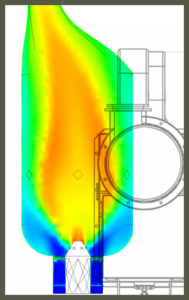
If you're in the market for a new incinerator, there are lots of options to choose from. In the last decade alone, incinerators have come a long way with so many different designs and features - as well as a huge variety of shapes and sizes.
So how do you choose which type of incinerator is right for you?
The key is in deciding which specifications you're going to need. There's no point in picking an incinerator that looks great on paper only to find you can't use it to burn the waste you actually have on site.
So here are some of the most important incinerator specifications you need to consider:With or without secondary chamber?
One of the first decisions to make regarding incineration specification is whether you opt for just a single, primary chamber, or an incinerator that also includes a secondary chamber.
A single chamber incinerator is only suitable for certain waste streams containing mostly organic material. Temperatures don't need to be as high to generate complete combustion. This design offers no control on the emissions released.
 Benefit of a secondary chamber
Benefit of a secondary chamber

But if you want to burn more general or mixed waste streams - especially those which contain any plastics - you'll need a secondary chamber. This is because the secondary chamber is necessary to achieve the higher temperatures required for complete combustion of the exhaust gases.
Secondary chambers also include afterburners to assist in the prevention of de novo formations. Secondary chambers are also vital for gas retention time. This is likely to be a specification requirement your incinerator needs to meet, based on environmental regulations in your country.
Burn rates, fuel types and consumption
Understanding what type of waste you want to incinerate is also important in deciding the burn rate specifications of your incinerator.
You'll want to know how much of your waste you can burn in an hour, and this isn't always a case of a larger size chamber equalling more capacity. It all depends on the design, build and efficiency of an incinerator, and the fuel source you are using.
You could be using light oil, natural gas or LPG to fuel your incinerator - with each offering different fuel consumption rates and impacting the burn rate of your waste.
 Chimney stack length
Chimney stack length

Another important specification for your incinerator is the length of the chimney stack - and its performance.
Typically you'll need a sufficient height on the chimney so it extends above any surrounding buildings or terrain in the close vicinity. This is often a regional requirement to make sure any gases and emissions are dispersed adequately.
Expect a minimum height of 4-5 meters and be cautious that there may be minimum requirements for the distance between the top of the chimney and any nearby roofs.
The stack depending on local regulations, may need to comply with air pollution controls and exit velocity standards. This can easily be achieved with INCINER8's range of pollution control systems.
Minimum and maximum temperature requirements
To ensure complete combustion at all times, you'll need to make sure you check the operational temperatures for your incinerator.
Modern, efficient and effective incinerators - like all those supplied by INCINER8 - should operate at a minimum of 850°C. Ideally, they should be safe for any waste stream up to 1100°C and linings are rated up to 1600°C.
This ensures your operators will always be protected, items in the waste stream will be completely destroyed and your incinerator will be kept in good working order, regardless of the heat inside.
Dimensions and mobility
Finally, you'll want to compare all the dimension specifications of any potential incinerator, as well as statistics like its shipping weight.
Be sure to take into account the external length, width and height of any incinerator, so you can be certain it will fit in the desired location. Don't rely on pictures, as they can be very deceiving.
At INCINER8, we can ship all of our incinerators anywhere in the world. You shouldn't be responsible for shipping, otherwise weight may become a big factor. Many of our incinerators are designed to be mobile, so they're ideal for remote or hard to reach places.
Want to learn more about incinerator specifications? Take a look at our quick reference guide, or browse our entire waste incinerator range.

